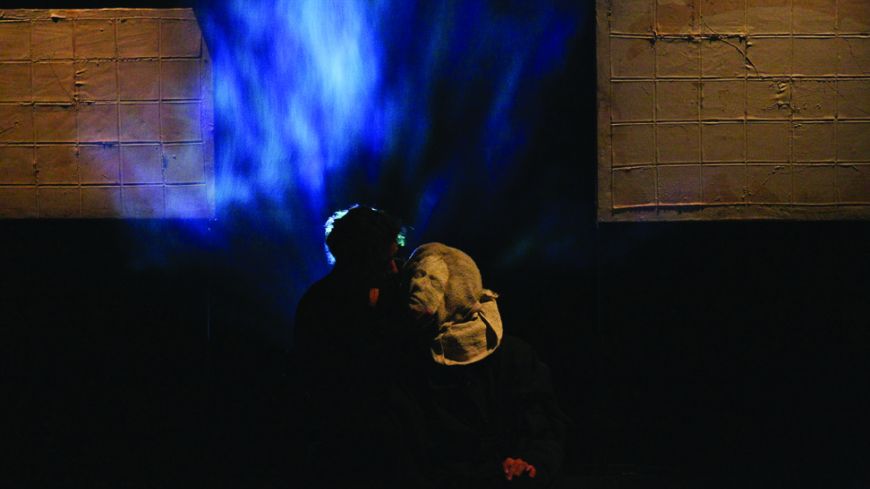
Hamletmachine, written in 1977 by German playwright Heiner Muller, is loosely based on Shakespeare’s Hamlet. Condensed into a thought-provoking nine page script, it extrapolates the central themes of the original to contemplate a postmodern reading of the nature of human frailty and the fragility of our desperate attempt to hold on to a consistent world view.
Writing at a time when Germany was still divided between East and West, notions of communism, feminism and political upheaval are wrestled into a series of monologues, that partially connect through a contemplation of the uncertain and temporary nature of the self and the problematic social construction of identity.
Performed many times since the seventies, this production by Compagnie Sans Soucis, directed by Max Legoube, uses puppetry, animation and physical theatre to produce a unique and enigmatic piece of performance art. Without the usual constraints inherent in replicating a conventional plot, this company were able to utilise a myriad of versatile, visual techniques to interpret the monologues, and the silences between, with layers of meaning that left traces of bleakness, futility and an unspecific sense of danger, among other aspects of humour, strength and beauty.
There appeared to be more than a nod here to perhaps the most well known and controversial of postmodern philosophers, Jacques Derrida. In his work, ‘Spectres of Marx’, he displayed a fascination with Hamlet’s line ‘time is out of joint’, spoken to the ghost of his dead father.
Derrida draws a distinction between objective time and existential time and the fragile connection that exists between the past, present and future. Postmodern philosophy since Heidegger has contained some element of the idea that human experience is conditioned by time and this performance began with the sound of a regular, relentless click that marked the passing of objective time while the performer writhed in his cocoon, the butterfly emerging from the chrysalis, struggling to exist.
The monologues contemplate human experience as a playing out of a series of roles that we simultaneously inhabit and stand outside of, as we reflect on our situation as actors in our own lives. Rather than this being resolved into a coherent self with a solid story that has a beginning, middle and end, the self and its story remains fragmented and unresolved.
This production presented the monologues as a series of disembodied voices, sometimes male, sometimes female, accompanied by intensely symbolic visual apparitions, such as the ghostly animated figure that floated in the air, its form barely constructed out of smoke and light, wispy and insubstantial.
The spectre of Marx appeared to witness the communist struggle, a cut-out head waving gaily from above as the rows of shadow puppets below were swept dispassionately into an untidy heap. The shadowy silhouette of a hammer and sickle appeared ominous and menacing in this context, layered with a multitude of meanings and interpretations.
This was visual poetry: not always obvious or simple to decipher, but tapping into those parts of ourselves that cannot always be expressed in words. This is not a performance to be encountered lightly, this is no light entertainment. But for those prepared to contemplate the horror and the wonder of human existence, this production should be actively sought and relished.
Hamletmachine played as part of the Manipulate Visual Theatre Festival which continues at The Traverse until Saturday.

